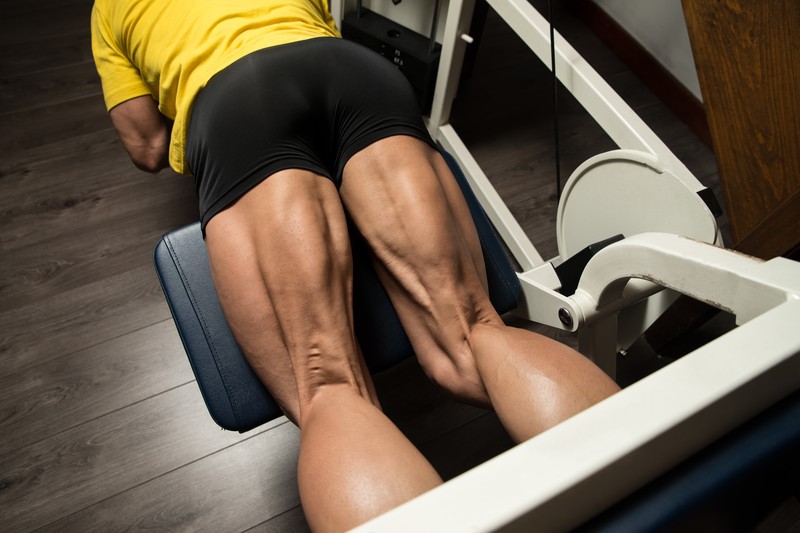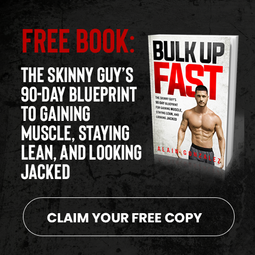Many people who spend most of the day sitting down may have lost their lower body mobility. This is because there is less movement and you may experience pains in your hip area as well as the legs. If you notice, your legs feel dead after an extended period of sitting down. With that said, you need more exercise to improve mobility.
Flexibility and mobility are directly related. When your lower body is flexible, it is easier to move. Flexibility is also lost when there is very little activity. There are many ways that you can have fun while having physical activity so don’t be complacent. Why not go to the gym, engage in aerobics, practice calisthenics, or even attend yoga classes? These are all excellent activities to improve flexibility.
Strength training requires lower body mobility and flexibility. Your lower body needs to be strong enough to squat down and apply pressure to lift the heavy weights. If your lower body is not flexible, your joints will be pressured, and you may experience a lot of pain and discomfort.
When targeting the lower body, make sure that you improve all areas such as the ankles, legs, knees, and hips. Flexibility and mobility has a domino effect; if your lower body is unstable you will have problems with balance and movement. The strength of your lower body is fundamental to your movements.
So, how can we improve lower body flexibility and mobility? Read on to find out more about exercises that you can perform.
Hip Exercises for Lower Body Mobility

First, we will look into hip exercises that improve hip mobility and flexibility. These exercises are fundamental in strength training, too.
Squats
Squats should be performed correctly to get the maximum benefit. There are two kinds of squats – parallel and full squats. The lower the squat, the more effective it is.
To perform squats in strength training, choose weights that you can properly lift. If you haven’t reached your plateau, don’t choose something heavier than your usual weights.
Spread your feet at hip width apart and hold the barbell firmly in front of you. As you prepare to lift slowly lower yourself by bending your knees. Your knees should not go too forward that they stick past your toes. Make sure your torso is straight as you lower your body.
As you go up to lift, the force should come from the legs and hips. This action allows you to push the weights up. Don’t lock your legs when you reach the standing position.
You can also perform squats without weights. Squats are great as an exercise and cardio activity.
Hip Flexor Stretch
This stretching exercise is ideal for releasing tension in the hips which causes tightness.
The first step is to kneel down on one knee with the other leg forward. Your thighs should be perpendicular to the lower leg.
Keeping your back straight, move your upper body forward and hold the position for fifteen counts. An alternative is to raise one of your arms over your head with your fingertips touching the opposite shoulder. Raise the arm that is opposite the knee that is raised forward.
Perform the same rep with the other leg. Do two repetitions each leg.
Quad Stretch
The quad stretch is almost similar to the hip flexor stretch. The only difference is that instead of one leg kneeling, you prop the lower leg up by placing your toes on a bench. This exercise looks easy but you may experience discomfort if your hips lack flexibility.
Kneeling Lunge
The kneeling lunge is great for hip flexion.
To start, the knee and foot should be a hip width apart from the raised leg. For a maximum stretch, you can pull the back knee off the ground.
Hold the position for fifteen counts before shifting to the other leg.
Stretches for Lower Body Mobility

Stretches are perfect for warming up and exercise. Your lower body needs to be flexible so that you can easily move. Make sure to incorporate these stretching exercises in your routine.
Hamstring Stretch
The hamstring stretch is best for sprinters or those who perform deadlifts.
First, stand with your knees slightly bent and at shoulder width apart. Slowly bend forward while keeping your back straight. For maximum effect, hold a dumbbell against your chest. As you bend forward, make sure your body is at a 90-degree angle. Return to a standing position and do fifteen to twenty reps.
Pigeon Stretch
This exercise is ideal for hip mobility because it targets the hip rotators and hip flexors. This exercise will also prepare you for squats.
The first step is to lie on the ground and bend one leg in front of you with the other stretched out behind you. While leaning forward with your forearms, hold the position for a minute. If you are having difficulty with the position, raise yourself up with your hands.
Cobra Stretch
This exercise targets multiple areas such as the lower back, hips, legs, chest, and abs. This exercise is recommended for runners and those who perform twists (basketball players, gymnasts).
To start off, lie on your stomach with your palms flat on the ground in front of your chest. Slowly push yourself up without lifting your hips from the floor. Tilt your head back and stretch further. You will surely feel the stretch on your abs and chest. Hold the position for up to five seconds and perform twenty reps.
Samson Stretch
The Samson stretch directly targets the glutes, quads, hip flexors, and lower back as well as the shoulders and arms. This exercise is an excellent preparation for squats, deadlifts, and athletes who use their whole body for movement (swimmers).
To start off, raise your arms above your head with your fingers laced together. Bring yourself down into a lunge position. Slowly push your hips forward as you stretch higher. Make sure that your front knee does not go past your toes. Hold this position for ten seconds then do up to eight reps per leg.
Other Lower Body Exercises

The next few exercises target other areas such as the ankles, knees, and legs. These body parts are important in maintaining not just flexibility but balance and stability.
Child’s Pose
This exercise targets not only the abs and back but the hips, legs, and thighs.
Start with a kneeling position wherein you sit on the back of your thighs with your toes pointed backward. Your butt should rest on your heels.
Raise your arms above your head then slowly bend forward. Your back should be straight, and your arms should not touch your ears. Your chest should rest on your thighs and your forehead should touch the floor.
Hold this position up to ten seconds and perform up to ten reps.
Inverted Flyers
This exercise is another full body workout that primarily targets the abs, butt, hips, legs, and thighs.
Start with a standing position with your feet a shoulder width apart.
Keep the right foot steady on the ground then lift the left knee to your hips. Now, bend the elbows to 90 degrees. When you raise the left knee, swing the right arm forward and the left arm backward.
Slowly bend forward and stretch the right arm forward and the left elbow backward.
Maintain your balance and keep your abdominal muscles contracted. Hold the position up to five seconds before moving back to a standing position.
For maximum effect, hold a dumbbell in each hand. The key to this exercise is to flex your abdominal muscles and maintain your balance. The pressure to each of the hips is best for hip flexion.
Hip Raises
This exercise targets the hips, butt, thighs, and legs for added strength.
Start by lying on your back with your knees bent, and your feet planted firmly on the ground. Your arms should rest on your sides with your palms facing the ground.
Slowly raise your hips by contracting your abs and legs. Your palms and feet should not lift off from the ground. Don’t use your arms to exert the pressure.
For added efficiency, raise one knee up to your chest and hold it firmly with the opposite hand. One arm should be resting on your side while you lift your hips up.
Perform up to 20 reps.
Conclusion
The exercises above should be incorporated into your regular routine. You can even add them to your yoga, calisthenics, or aerobics routines. Your lower body is the most active region of your body. Walking, running, lifting heavy objects, driving, and even balance are activities that rely on your lower body.
Having strong lower body results to flexibility and mobility. When the muscles of your lower body are not strong enough, your bones lose their protection or cushion. Therefore, it is harder to move around.
Weightlifters and powerlifters alike should improve the lower body. Improving lower body flexibility and mobility helps them lift heavy weights properly. An underdeveloped lower body may cause injury to those who lift weights.
Athletes should also develop their lower body for balance and stability. Don’t think that only runners should improve the lower body. All athletes rely on lower body movements for speed, agility, strength, flexibility, and balance.
What are your thoughts? I hope that you have learned a lot based on this article. We’d also love to hear your feedback and comments. Don’t hesitate to send us a note and share this knowledge with others!
About the Author
 Tony John is a blogger and main Editor at the BoostBodyFit.com.
Tony John is a blogger and main Editor at the BoostBodyFit.com.
He loves fitness, bodybuilding and calisthenics.
Follow BoostBodyFit’s social media on Twitter @boostbodyfit.



